Expecting the Northern Hemisphere’s finest to put on a show for the masses who would usually be sharing hip-flasks and tales of yore in pubs around the great rugby stadiums was always going to be a tall-order given the inhospitable conditions but the measly six tries in three games we were offered could hardly be filed under ‘entertainment’. Too much kicking, stingy defensive lines and scrums may have had purists purring but it is a moot point whether it will pull in new fans of this curious, rule-bloated spot.
Still, it’s all we have right now, and is far better than no rugby, so The XV have whistled up a wrap-up of the action for rugby’s preachers. The disciples will hopefully follow.
England
In line with Eddie Jones smartening up his autumn wardrobe, England cut a muscular dash against Ireland.
Jones’s sartorial upgrade on the look he sported against Georgia was the addition of a scarf from England sponsor Charles Tyrwhitt, the high street tailor. If he adds a pair of corduroy trousers to his outfit for next week’s match against Wales, then we can really expect fireworks from England.
His team were a notch up from Georgia against Ireland. There was of course a return to the scoresheet for Jonny May who ran the length of Jermyn Street for the most sumptuous of solo scores. Bryan Habana told Amazon Prime viewers he reckoned it was the try of the year. Richie Mo’unga and Justin Tipuric may argue that but in the individual category no one comes close, other than May perhaps for how he turned France inside and out in scoring his second of two tries in Paris in February. The first one wasn’t too shabby either.
England’s improved performance levels were not just confined to their long-limbed superstar in the No 11 shirt. The brutality that marks out the very best England performances under Eddie Jones was there for all to see.
Against Georgia a week ago, England didn’t need to pestle their opponents into the grass. But against Ireland there was a innate desire to be the dominant force in contact.
When Ireland had the run of England between 2015 and 2018 – winning three of the four Six Nations encounters between the two countries – they built their victories on the back of winning the physical contest.
But at Twickenham on Saturday England won this most important area of the game.
As a team England made 246 tackles, missing only nine. Maro Itoje, Tom Curry, Sam Underhill and Billy Vunipola were clocked with over 20 tackles each. Whilst the combined tackle count for just the backrow of Vundercurry [trademark] was 74, with not one missed. Those statistics threw a net around Ireland’s attack which they only occasionally punched their way through.
When they did through the ageless Keith Earls (now 33 but as rapier-sharp as ever) May was there to haul him down, and in the second-half Henry Slade raced back to ever-so dexterously deny outside centre Chris Farrell after a smart kick by Ross Byrne left Farrell on top of England’s tryline.
In the end, the only option was to go over the top of England, a tactic Billy Burns and Jacob Stockdale deployed expertly seven minutes from time. But it was all too late by then. JZ
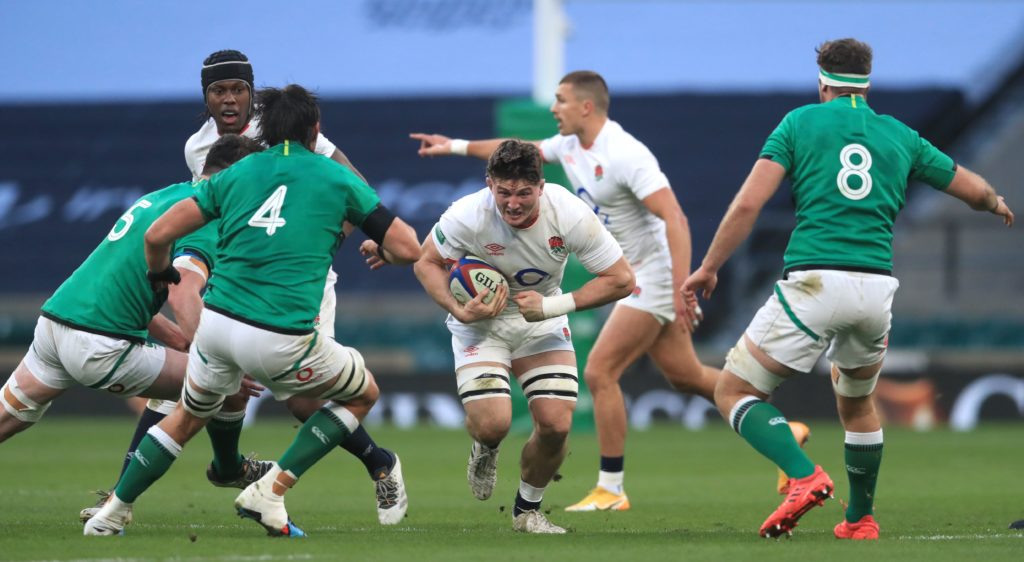
Star Man – Jonny May
Maro Itoje was a force of nature, again, but the one thing he can’t do is score tries like Jonny May. Few can. May’s brace showed the two sides of the Test match specimen he has become. First, the discipline and hours of practice that went into claiming the cross-field kick for the first try, and then his superstrength: making rugby look like a track and field event for 15 beautiful seconds.
Ireland
For years Ireland sucked the life out of teams who couldn’t show their meticulously planned patience. Their gameplan became so familiar the opposition knew what was coming but couldn’t stop it.
It wasn’t always easy on the eye, but it brought Ireland to the very top of the world rankings in 2019.
For Andy Farrell and his new breed it hasn’t proved an easy blueprint to move on from. Some of Ireland’s play still looks like it was drafted on Joe Schmidt’s chalkboard but the same outcomes have proved elusive.
The possession and territory statistics, for example, looked like the Irish of old: 68% possession and 72% territory in their favour. And they weren’t undone by penalties either, certainly no more than England, whilst they conceded fewer turnovers, with five to England’s eight.
Where they fell down was at the set-piece – with the lineout requiring urgent remedial work – and in the physical confrontation, where every player in the pack lost their personal battles with their English counterpart. Even new captain James Ryan, who led from the front and stood head and shoulders above his team-mates, was still dominated by Itoje.
Caelan Doris may have all the makings of being Ireland’s long-term No8 but he was monstered on multiple occasions by England’s defensive line.
What was perhaps most encouraging was that Ireland’s resolve didn’t break and they problem-solved to a degree, enough to work a brilliant try for Stockdale, whose angled run collected a well-timed chip from Burns.
It was a tactic that could and should have been used on many more occasions. Individually several players came away with their reputations enhanced, such as outside centre Chris Farrell and scrum-half Jamison Gibson-Park. No cigar, but much to work on for Farrell Snr. JZ
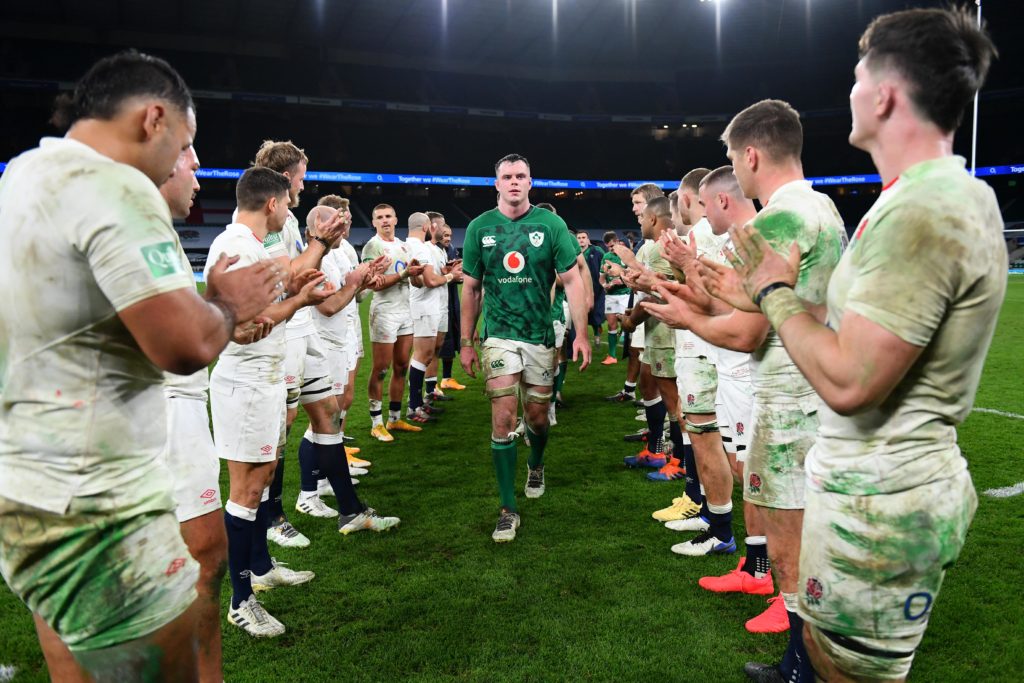
Star man – James Ryan
That Ryan captained his country for the first time from the start and still performed so well individually will surprise absolutely no one. But that shouldn’t detract from the credit he deserves for doing so. A strong captain’s showing, and a Test Lion in waiting if he stays fit.
Wales
Can the kids do it on a biblical night down in West Wales? That was the question on every fans lips as Wayne Pivac’s men searched for their first victory since February. The visitors on that occasion, Italy, scored exactly the same amount of points as Georgia, zero, leaving Gethin Jenkins with an uncustomary smile at his face at the final whistle and would have pleased Alun Wyn Jones watching on, resembling Colonel Kurtz of Apocalyse Now fame, face hidden by an enormous hood, with only his eyes visible. Of course it was not a game for aesthetes.
The weather was truly wretched leaving the packs to huff and puff until the other relented and to that end Samson Lee and Wyn Jones could be pleased with their night’s work against Mikheil Nariashvili and Beka Gigashvili leading Pivac with much to ponder ahead of the England game.
In the engine room, it was the soothing sight of Jake Ball’s wondrous beard hammering into contact, that gave Wales front-foot ball and Aaron Wainwright’s explosivity from the base of the scrum that will see him heavily considered for action against the dual tearaways, Sam Underhill and Tom Curry.
Tries were a scarcity, but after looking a little tentative and much like the 19-year old he is, Louis Rees-Zammit soon got down to doing what he does best when the ball was forced wide to him on the left-flank, crashing over for the first in what is expected to be many tries in the red of his country. His gliding 40m run in the second-half quickened the heart in a dour encounter.
Elsewhere, Callum Sheedy was composed and had a delicious tip-on pass to Rees-Zammit in the build-up to Rhys Webb’s try where Rees-Zammit turned provider. It was a night where four new debutants took their first bow and gave an inkling to Wales’ line-up nearer France 2023 than the 2021 Six Nations, but you suspect a few, notably Johnny Williams, could be promoted sooner than later.
A win to relieve the pressure on Pivac before the English juggernaut heads West in formidable form. OJ
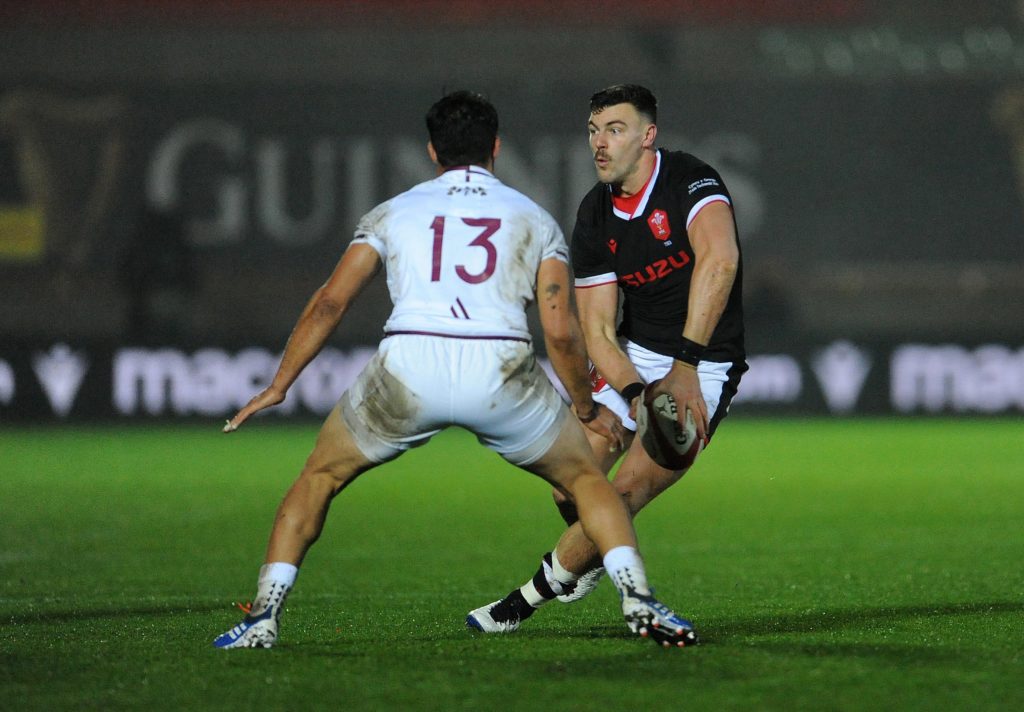
Star man – Johnny Williams
The 24-year-old is 6ft 3in, has long-levers to offload and can power over the gainline if needed. In short, he looks the part. It was a measured performance – he didn’t do anything outrageous – but like Hadleigh Parkes before him, he doesn’t need to, he just needs to grow into a No 12 shirt that looks made for him.
Scotland
Scotland have veered away from the abandon of 2019 and the dismal World Cup, but in transforming themselves into a rugged, desperately-hard-to-beat team, at least some of the attacking brilliance that defines them under Gregor Townsend has been lost.
Sunday’s bruising defeat by France was a vivid indicator of their state of transition. They were always going to struggle to match the French power game, the size, explosiveness and dynamism of the visitors in contact. The srummage creaked horribly at times. Too many collisions were lost, too many sloppy errors made, and a penalty count of sixteen was crippling. But still, Scotland weathered the storm and stayed in the battle far better than they would have a year ago.
What they lacked was the infusion of guile to slice the French open. In magnificently solidifying their defence, Scotland scored only seven tries in the Six Nations. Their blueprint and ballast were enough to quell a fearless Italian side last Saturday, but not here, not against rampant France. Seldom did they look like cutting free.
The positives? Matt Fagerson emphatically nailing down the number eight jersey, one of the few wide-open berths in the team. The Glasgow man is just 22, but performed titanically, consistently plundering metres – seventy of them from fourteen carries, in fact – on the charge against the French behemoths. Hamish Watson was a beast alongside him in the back-row and Duhan van der Merwe continues to flourish on the Test stage.
Of course, a fit and swaggering Finn Russell or Adam Hastings might have helped ignite things, but the bluntness is not merely down to the missing play-makers. Scotland, quite rightly, have sacrificed a little elan for some desperately needed belligerence, but they are still grasping to strike the right balance. JL
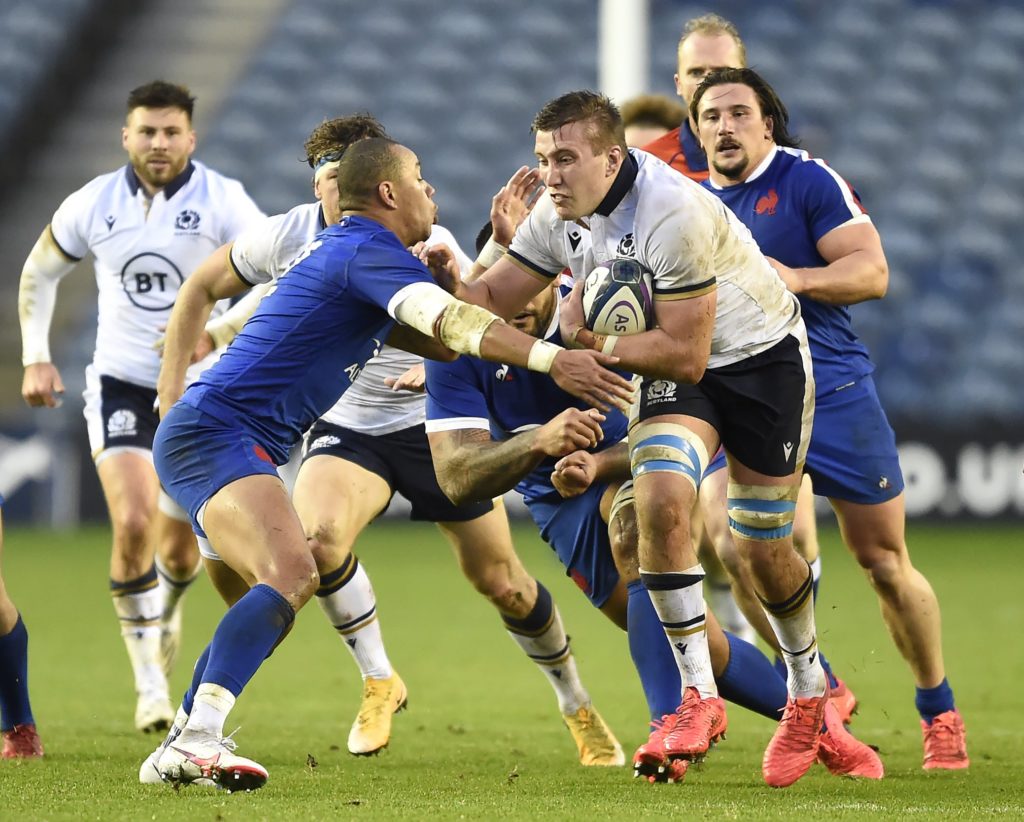
Star man – Matt Fagerson
Scotland needed a man to give them front-foot ball and the burly sight of Matt Fagerson on the gallop was enough to rouse both his team-mates and the fans. Fagerson Jnr was full of endeavour and must now be considered a first-choice pick at No 8.
France
It was less than a year ago that France, fresh after being bombed out of the Rugby World Cup by Wales, tore up the established order and picked a fresh-faced glut of debutants. If it wasn’t for Mohamed Haouas’ clenched fist they could well have been sipping the Champagne of Six Nations champions but nevertheless, they have emerged as the hipster’s choice of team.
The fare, as has been the case in this Nations Cup, was far from rock ‘n’ roll, but there’s a confidence from Fabien Galthie’s men that simply wasn’t there under Jacques Brunel. Gregory Aldritt and Charles Ollivon seem balanced in the backrow, Bernard Le Roux and Romain Romain Taofifénua punched holes in the Scottish defence with impunity and there’s a battle royal shaping up between Camille Chat and Julian Marchand for the No 2 shirt.
There wasn’t much in it up in Murrayfield, but the fact Shaun Edwards could point to another defensive shut-out points to another reason for their renaissance.
True they missed the running elan of Romain Ntamack – which side wouldn’t – and the speed and power of Damien Penaud is surely preferable to the lightweight Vincent Rattez, but the fact they closed out a game with Galthie remaining unruffled, bodes well for their home World Cup. A Nations Cup final rendez-vous with England beckons. OJ
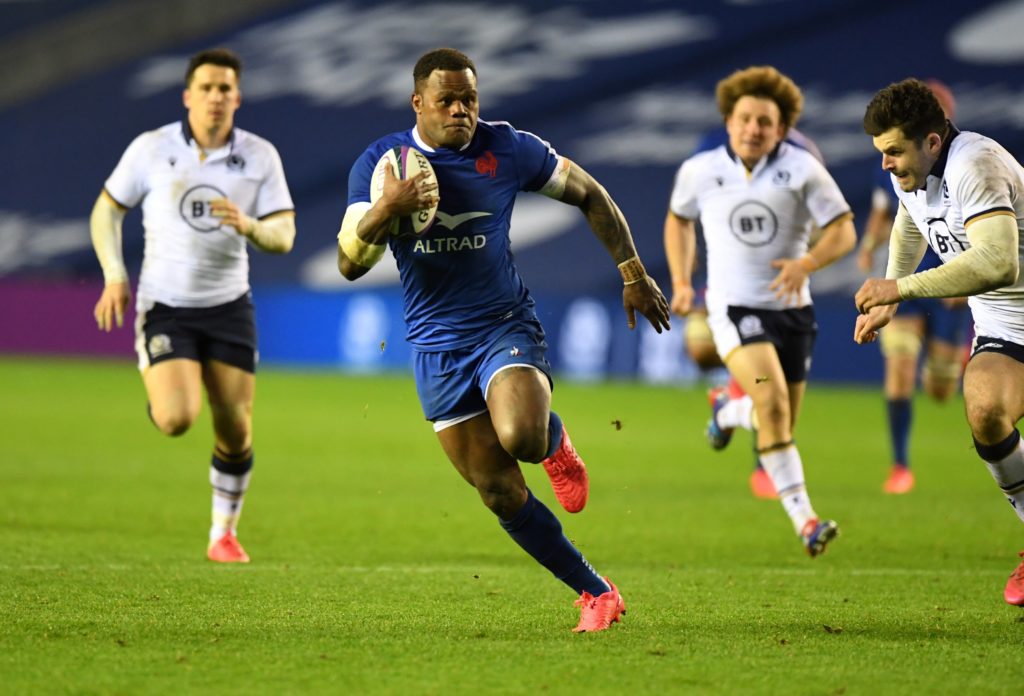
Star man – Virimi Vakatawa
It would take quite a show to stir the emotions of the watching journalists, but the Fijian speedster was about as close as you’d get to va, va, voom on a crisp night in Edinburgh. Vakatawa always looks to offload and takes some stopping.
If you’ve enjoyed this article, please share it with friends or on social media. We rely solely on new subscribers to fund high-quality journalism and appreciate you sharing this so we can continue to grow, produce more quality content and support our writers.


Comments
Join free and tell us what you really think!
Sign up for free